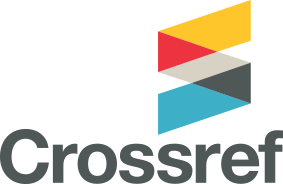INTEGRATED NAVIGATION AND COMMUNICATION PROTOCOLS FOR AUTONOMOUS INTELLIGENT SYSTEMS: ARCHITECTURES, MODELS AND IMPLEMENTATION CHALLENGES IN DYNAMIC ENVIRONMENTS
DOI:
https://doi.org/10.32689/maup.it.2025.2.17Keywords:
autonomous systems, autonomous networks, distributed intelligence systems, navigation, communicationAbstract
The paper presents an approach to the development of Autonomous Intelligent Systems (AIS) capable of operating independently in dynamic environments without continuous operator intervention. Such systems consist of groups of intelligent agents united in a network with a common goal–to carry out complex missions.Purpose. To analyze the constraints of autonomous operation in terms of the communication and navigation capabilities of system elements; to formulate key requirements for the implementation of communication and navigation in autonomous intelligent groups; and to develop and evaluate the corresponding architecture and models capable of ensuring stable, efficient, and coordinated system performance during task execution.Methodology. The research methodology is based on a systems analysis of the functional properties of autonomous systems using models of information interaction to assess the effectiveness of communication and navigation processes. Logical architecture modeling and agent interaction protocols in a dynamic environment were applied to determine optimal control structures.Scientific novelty. Special attention is paid to the development of navigation and communication models, which serve as the main functional components ensuring autonomous mobility. The author outlines functional requirements for communication and navigation systems, including completeness, responsiveness, energy efficiency, consistency, and resilience. The paper analyzes communication topologies (centralized, decentralized, hierarchical, hybrid) and their impact on the efficiency of agent interaction.Conclusions. In the field of navigation, the focus is on integrating Global Navigation Satellite Systems (GNSS) and Inertial Navigation Systems (INS) as a basis for increasing accuracy and robustness in real-world conditions. The article proposes a consensus-based navigation protocol that resolves discrepancies between agents through data exchange, ensuring coherence in decision-making. An architectural model of a protocol structure for autonomous mobility is proposed, integrating communication and navigation into logical layers with high adaptability to specific tasks. This approach promotes the creation of robust, scalable, and versatile autonomous systems suitable for use in various domains, from unmanned technologies to rescue operations.
References
Кучеров Д., Долгих С., Мирошниченко І., Пошивайло О. Протокольні та логічні моделі для забезпечення надійності та стійкості автономних систем БПЛА. Матеріали 13-ї Міжнародної конференції з надійних систем, послуг і технологій. Афіни, Греція, 2023. С. 1–7. doi: 10.1109/DESSERT61349.2023.10416491 (дата звернення: 28.04.2025)
Кучеров Д., Фу М., Козуб А. Синтез законів керування рухом групи БПЛА з природними перешкодами. Автоматизовані системи в авіаційній та аерокосмічній галузях: зб. наук. праць / ред. Т. Шмельова, Ю.В. Шмельова, Н. Сікирда, Н. Різун, Д. Кучеров, К. Дергачов. Суми : Вид-во СумДУ, 2019. С. 193–219.
Шмельова Т., Ковальов Ю. Н., Долгих С., Бурлака О. Оптимізація польоту автономних груп БПЛА на основі геометричного моделювання. Матеріали 5-ї Міжнародної конференції «Актуальні проблеми розробки безпілотних літальних апаратів», Київ, Україна, 2019. С. 79–82. doi: 10.1109/APUAVD47061.2019.8943856. (дата звернення 01.05.2024)
Babaie R., Ehyaei A. Cooperative Control of Multiple Quadrotors for Transporting a Common Payload. AUT Journal of Modeling and Simulation. 2018. № 50(2). Р. 147–156. doi: 10.22060/miscj.2018.14252.5100. (date of access: 15.04.2025)
Eom T.-I., Lee W.-Y., Lee D.-Y., Kim J.-H., Hur W.-H. Procedure-based development platform for communication protocol stack software. In Proceedings of the IEEE Conference on Advanced Microsystems for Automotive Applications (CAMAD) 2016. P. 12–17. doi: https://doi.org/10.1109/CAMAD.2016.7790323. (date of access: 17.04.2025)
Gollnick M., Niklass M., Swaid M. Methodology and initial results of the assessment of UAM concept potential. Proceedings of Aerospace Europe Conference, 2020. Hamburg, 1–11. URL: https://www.academia.edu/66696287 (date of access: 20.04.2025)
Hansen J. M., Fossen T. I., Johansen T. A. Nonlinear observer design for GNSS-aided inertial navigation systems with time-delayed GNSS measurements. Control Engineering Practice, 2017. 60, 39–50. doi: https://doi.org/10.1016/j.conengprac.2016.11.016. (date of access: 18.04.2025)
Hercog D. Protocol stack. In Communication protocols: Principles, methods, and specifications. Springer International Publishing. 2020. P. 67–81. doi: https://doi.org/10.1007/978-3-030-50405-2_5 (date of access: 20.04.2025)
Li Y., Zheng J. Design and implementation of cooperative turning control for the towing system of unpowered facilities. IEEE Access. 2018 № 99. P. 1–5. doi: https://doi.org/10.1109/ACCESS.2018.2819692 (date of access: 21.04.2025)
Liu L., Lian, X., Zhu C., He L. Distributed cooperative control for UAV swarm formation reconfiguration based on consensus theory. 2nd International Conference on Robotics and Automation Engineering (ICRAE). 2017. P. 264–268. doi: https://doi.org/10.1109/ICRAE.2017.8291392 (date of access: 1.05.2025)
Morais D. H. Data communication systems protocol stacks. 5G NR, Wi-Fi 6, and Bluetooth LE 5 (Chapter 2). 2023. doi: https://doi.org/10.1007/978-3-031-33812-0_2 (date of access: 15.04.2025)
Olfati-Saber R. Flocking for multi-agent dynamic systems: Algorithms and theory. IEEE Transactions on Automatic Control. 2006. № 51(3). Р. 401–420. doi:https://doi.org/10.1109/TAC.2005.864190 (date of access: 01.05.2025)
Saqib M., Jasra B., Moon A. H. A systematized security and communication protocols stack review for Internet of Things. IEEE International Conference for Innovation in Technology (INOCON). Bangluru, India.2020. Р. 1–9. doi: https://doi.org/10.1109/INOCON50539.2020.9298196 (date of access: 28.04.2025)
Sharma C., Gondhi N. K. Communication protocol stack for constrained IoT systems. In 2018 3rd International Conference on Internet of Things: Smart Innovation and Usages (IoT-SIU). Bhimtal, India. 2020. doi: https://doi.org/10.1109/IoT-SIU.2018.8519904 (date of access: 28.04.2025)
Tenedório A., Estanqueiro R., Henriques C. D. Methods and applications of geospatial technology in sustainable urbanism. Pennsylvania, USA: IGI Global. 2021. doi: https://doi.org/10.4018/978-1-7998-2249-3 (date of access: 26.04.2025)
Yu X., Guo G., Gong J. Cooperative control for a platoon of vehicles with leader-following communication strategy. Chinese Automation Congress (CAC). 2020. P. 6721–6726. URL: https://ieeexplore.ieee.org/document/8243988. (date of access: 01.05.2025)
Zhang Q., Lapierre L., Xiang X. Distributed control of coordinated path tracking for networked nonholonomic mobile vehicles. IEEE Transactions on Industrial Informatics, 2013. № 9(1). P. 472–484. doi: https://doi.org/10.1109/TII.2012.2219541 (date of access: 17.04.2025)
Downloads
Published
How to Cite
Issue
Section
License
Copyright (c) 2025 Ігнат МИРОШНИЧЕНКО

This work is licensed under a Creative Commons Attribution 4.0 International License.





